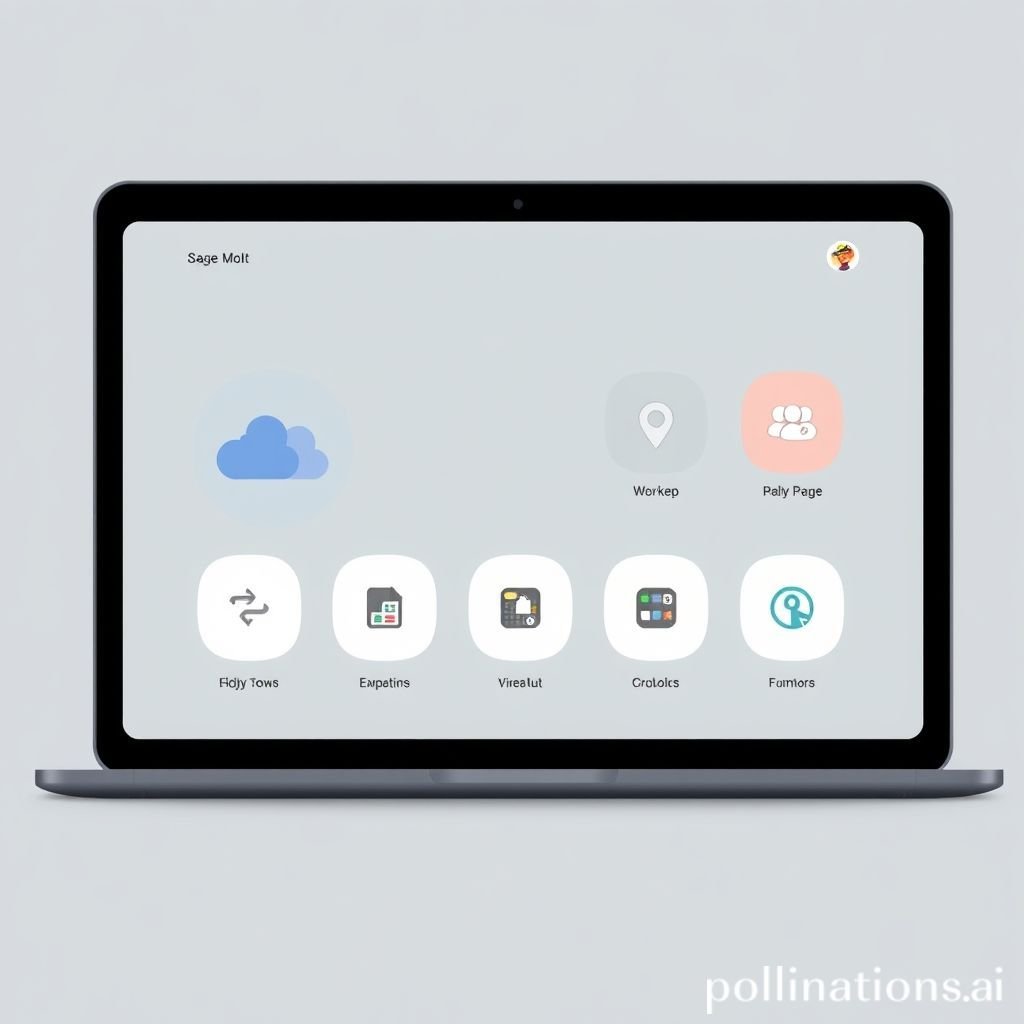The Subtle UI Click: Perfecting Interface Feedback
A well-crafted UI click is more than just a sound; it's an indispensable element in modern digital design, subtly enhancing user experience and providing critical interface feedback. From the satisfying confirmation of a digital tap on your smartphone to the crisp menu selection in a video game, the humble UI click serves as an auditory cue, bridging the gap between user action and system response. Its practical applications span across virtually all interactive digital platforms, ensuring a smooth, intuitive, and reassuring interaction.
This subtle audio effect, often taken for granted, plays a vital role in usability, guiding users through complex interfaces with immediate, non-intrusive feedback. It confirms actions, highlights selections, and creates a sense of responsiveness that visual cues alone cannot fully achieve. The art of designing an effective UI click lies in its ability to be both present and unobtrusive, a gentle nudge that confirms a successful subtle interaction without drawing undue attention.
Applications in Media
The UI click is a versatile sound effect, finding its place across a multitude of media, each demanding a nuanced approach to its design and implementation. Its primary function is to provide immediate, clear interface feedback, making user interactions feel more tangible and responsive.
Industry-Specific Uses
In the vast landscape of digital products, the UI click is a cornerstone of effective design. In video games, a crisp UI click might confirm a menu selection, an inventory item pickup, or a successful button press, providing crucial interface feedback that impacts gameplay immersion. Developers meticulously design these sounds to match the game's aesthetic, from the futuristic bloop in a sci-fi RPG to the earthy thunk in a fantasy adventure. Each UI click is tailored, often indicating different states or types of digital tap interactions, like a successful or failed action.
Mobile applications heavily rely on the UI click to make touch interactions feel more responsive and natural. Every digital tap on a button, a toggle switch, or a navigation icon is typically accompanied by a carefully designed UI click, offering immediate interface feedback. This subtle interaction prevents users from second-guessing whether their input was registered, leading to a smoother and more confident user journey. Similarly, web interfaces, particularly those with rich interactive elements, use a UI click to confirm form submissions, activate dropdowns, or highlight menu selection, improving overall usability. Even in virtual and augmented reality (VR/AR) experiences, a spatialized UI click can simulate a realistic button press, enhancing immersion and providing critical interface feedback within a 3D environment. This simple sound effect transforms abstract digital processes into tangible, satisfying experiences.
Creative Techniques
The beauty of the UI click lies in its adaptability and capacity for creative expression. It's not just a generic "click" but a carefully sculpted auditory event that contributes significantly to a product's brand identity and user experience. Designers can imbue a UI click with character by altering its timbre, pitch, and decay. A soft, airy click might convey elegance and minimalism, perfect for a high-end fashion app, whereas a sharp, percussive digital tap could signify speed and efficiency, ideal for a productivity tool.
Creative techniques involve modulating the UI click based on context. For instance, a "positive" UI click (e.g., successful submission) might be slightly higher in pitch and cleaner, while a "negative" UI click (e.g., error) could be lower, slightly distorted, or feature a quicker, more abrupt decay. These subtle distinctions provide nuanced interface feedback without resorting to jarring alerts. Utilizing different variations for common actions versus critical ones also adds depth, making the user's subtle interaction journey more intuitive. The choice of a metallic, woody, or ethereal UI click directly influences the perceived feel of the interface, contributing significantly to the overall user experience and providing rich interface feedback.
Technical Analysis
Understanding the technical characteristics of a UI click is crucial for both its creation and effective implementation. It's a short, transient sound, and its impact is disproportionate to its duration.
Waveform Characteristics
The waveform of a typical UI click is characterized by a very fast attack, a quick decay, and usually little to no sustain or release. This "ADSR" envelope defines its transient nature. The attack portion, often lasting mere milliseconds, is what gives the UI click its immediate punch. A sharp, clean attack ensures the sound is perceived instantly, providing immediate interface feedback. The decay phase is equally crucial; a rapid decay prevents the UI click from lingering and becoming annoying or obscuring subsequent sounds.
Different types of UI click sounds will exhibit variations in their waveform. A "soft" UI click might have a slightly rounded attack and a gentler decay, while a "crisp" or "percussive" UI click will show a very sharp, almost vertical attack transient, followed by a rapid falloff. Analyzing these waveforms allows sound designers to visually sculpt the desired feel for each digital tap interaction. Ensuring minimal sustain is key to avoiding an intrusive effect, preserving the subtle interaction feel. (Image ALT: Subtle UI Click sound waveform visualization)
Frequency Profile
The frequency profile of a UI click is another critical aspect. Most effective UI click sounds possess significant high-frequency content, which contributes to their "crispness" and helps them cut through background noise. Frequencies typically range from around 2kHz up to 15kHz or even higher, depending on the desired timbre. A lack of high-frequency content can make a UI click sound dull or muffled, diminishing its effectiveness as immediate interface feedback.
Conversely, while often subtle, lower-mid frequencies (around 200Hz to 1kHz) can add body or "weight" to a UI click, making it feel more substantial. Too much low-end, however, can make the UI click muddy or intrusive. Sound designers often use equalization (EQ) to sculpt this frequency profile, boosting desired frequencies and cutting unwanted ones to achieve the perfect balance. For instance, a subtle resonant peak might be used to give a specific "character" to a UI click, while a high-pass filter might remove extraneous low-end rumble, ensuring a clean and precise digital tap. Mastering the frequency profile ensures that the UI click provides clear and concise interface feedback without being overbearing, essential for subtle interaction.
Production Tips
Creating the perfect UI click involves a blend of technical expertise and creative sound design. It's about capturing or synthesizing the right elements and then meticulously shaping them.
Recording/Editing
For a truly unique UI click, consider foley recording. Everyday objects can yield surprisingly effective sounds. Tapping fingernails on different surfaces (wood, glass, plastic), clicking a pen, or even pressing various buttons on old electronics can produce distinct transient sounds. Microphones with a good transient response are crucial for capturing the sharp attack. Experiment with proximity to the sound source to capture different tonal qualities for your digital tap.
Once recorded, editing is key. Start by cleaning up the recording: remove any background noise using a noise reduction plugin. Then, carefully trim the sound to its essential transient, eliminating any unnecessary sustain or tail. Techniques like transient shaping can further enhance the attack or shorten the decay, allowing you to fine-tune the percussiveness of your UI click. Automation of volume (fading in and out quickly) can also help to precisely control the envelope of the sound, ensuring it's a quick, unobtrusive digital tap and provides clear interface feedback. A well-edited UI click is short, sharp, and instantly recognizable as a discrete subtle interaction.
Software Tools
Digital Audio Workstations (DAWs) like Pro Tools, Ableton Live, Logic Pro X, or Reaper are indispensable for creating and refining a UI click. Within these environments, a suite of plugins can be employed. Equalizers (EQs) are vital for shaping the frequency profile, enhancing clarity, or adding specific character. Compressors with fast attack and release times can be used to control dynamics, making the UI click more consistent in volume and punchier. Transient shaper plugins are particularly useful for accentuating the initial hit or reducing the tail of the sound.
For synthesizing a UI click from scratch, many DAWs include built-in synthesizers capable of generating short, percussive sounds. Simple sine waves, FM synthesis, or even noise generators with very short envelopes can form the basis of a digital tap. Experimenting with modulation, filtering, and very short reverb or delay effects can create a diverse palette of unique UI click sounds. Ultimately, the best software is the one you are most comfortable with, allowing you to effectively manipulate and refine your UI click to achieve the desired interface feedback. Related UI click sounds can be found in various software libraries.
Creative Implementation
Beyond its basic function, the UI click can be creatively implemented to add depth, character, and an enhanced sense of responsiveness to digital interfaces. This involves subtle layering and thoughtful spatialization.
Layering Methods
Layering multiple sounds is an advanced technique for crafting a truly unique UI click. Instead of a single sound, imagine combining a soft, subtle digital tap with a very short, high-frequency "sparkle" or a low-end "thump." This allows for a richer, more complex UI click that can still maintain its unobtrusive nature. For instance, a base sound, perhaps a simple percussive element, can be layered with a very short, filtered synth pluck to give it a digital feel, or a tiny metallic ping to add a sense of precision.
The key is subtle mixing and careful volume balancing of each layer. No single component should dominate, but rather they should blend seamlessly to create a singular, unified UI click effect. Experiment with different textures – organic recordings (e.g., a tiny drop of water, a finger snap), synthesized tones, or even heavily processed foley. Each layer contributes to the overall character, creating a bespoke UI click that provides distinct interface feedback and elevates the subtle interaction experience.
Spatial Effects
While often thought of as a mono or stereo sound, introducing spatial effects can significantly enhance a UI click, especially in immersive environments like VR/AR or even sophisticated 2D interfaces. Subtle use of panning can make a UI click appear to originate from the specific button or element being interacted with, reinforcing the visual cue. For example, a UI click for a left-aligned menu might have a slight left bias in the stereo field.
Reverb, when used sparingly, can add a sense of space without making the UI click sound distant or washed out. A very short, clean plate or hall reverb can give the digital tap a more polished feel, hinting at the environment without overwhelming the transient nature of the sound. Similarly, tiny delays can create a subtle "echo" effect, implying a larger, more resonant space. The goal is to enhance the UI click's presence and realism without sacrificing its immediacy or becoming distracting. Thoughtful spatialization transforms a simple UI click into a more immersive and spatially aware piece of interface feedback, contributing to a more satisfying subtle interaction.
Sound Pack Integration
Integrating a well-designed UI click with other sound elements from a comprehensive sound pack is essential for creating a cohesive and professional audio landscape for any digital product.
Using with Other Sounds
A standalone UI click is effective, but its true power is realized when it harmonizes with other interface sounds within its ecosystem. When sourcing a UI click from a sound pack, consider how it will blend with notification sounds, error chimes, transition effects, and ambient UI textures. A good sound pack will offer a suite of sounds designed to complement each other tonally and thematically. For instance, the crispness of a UI click should not clash with a warm, evolving background hum or a short, sharp alert sound.
Test the UI click alongside other elements. Does it stand out appropriately without being jarring? Does it provide clear interface feedback in busy scenarios? A well-integrated UI click feels like a natural part of the audio environment, providing a satisfying digital tap without creating auditory fatigue. It should be distinct enough to be noticed, yet subtle enough to fade into the background when not actively serving its purpose, embodying the essence of subtle interaction.
Complete Collection
For designers and developers seeking a robust and versatile set of audio assets, investing in a complete sound pack is invaluable. Such collections often contain a wide variety of UI click variations – from classic digital taps to modern, nuanced interface feedback sounds – alongside complementary elements like transitions, notifications, and background loops. This ensures consistency in sound design across an entire application or game. A comprehensive pack empowers creators to select the perfect UI click for every scenario, guaranteeing a cohesive and professional-sounding user experience. Don't settle for disparate sound files; explore curated libraries for optimal results. Get the full sound pack for comprehensive audio solutions and elevate your project's interface feedback to the next level. For professional-grade sound effects, visit Pro Sound Effects.
FAQ
Q1: Why is a subtle UI click important for user experience? A: A subtle UI click provides immediate, unobtrusive interface feedback, confirming user actions like a digital tap or menu selection. This creates a sense of responsiveness, reduces uncertainty, and makes the interaction feel more tactile and satisfying without being distracting.
Q2: How do I choose the right UI click sound for my project? A: Consider your project's aesthetic and target audience. A crisp, digital UI click suits modern tech, while a softer, more organic sound might fit a calming app. Experiment with different digital tap and interface feedback variations to match the overall feel and desired subtle interaction.
Q3: Can a UI click be too loud or too quiet? A: Yes. A UI click that's too loud can be jarring and annoying, while one that's too quiet might not provide sufficient interface feedback. The ideal UI click volume is just noticeable enough to confirm the action without dominating the audio landscape, ensuring a precise digital tap.
Q4: What's the difference between a UI click and a notification sound? A: A UI click typically provides immediate interface feedback for direct user actions (like a button press or menu selection), while a notification sound alerts the user to an event initiated by the system or another user (e.g., new message, update). Both are crucial for comprehensive interface feedback.
Q5: Are there different types of UI click sounds for various interactions? A: Absolutely. Sound designers often create a suite of UI click sounds: a primary digital tap for general button presses, a slightly different sound for menu selection, a unique interface feedback for toggles, and distinct sounds for positive or negative outcomes. This adds depth to the subtle interaction experience.





